Need advice? Let's talk.
Get straightforward guidance from your broadcasting partner. Schedule a call to chat with the team about your radio station.
Book DemoStart an Internet Radio Station for Beginners
Your complete guide to start an internet radio station. From equipment to marketing, make your broadcasts a success.
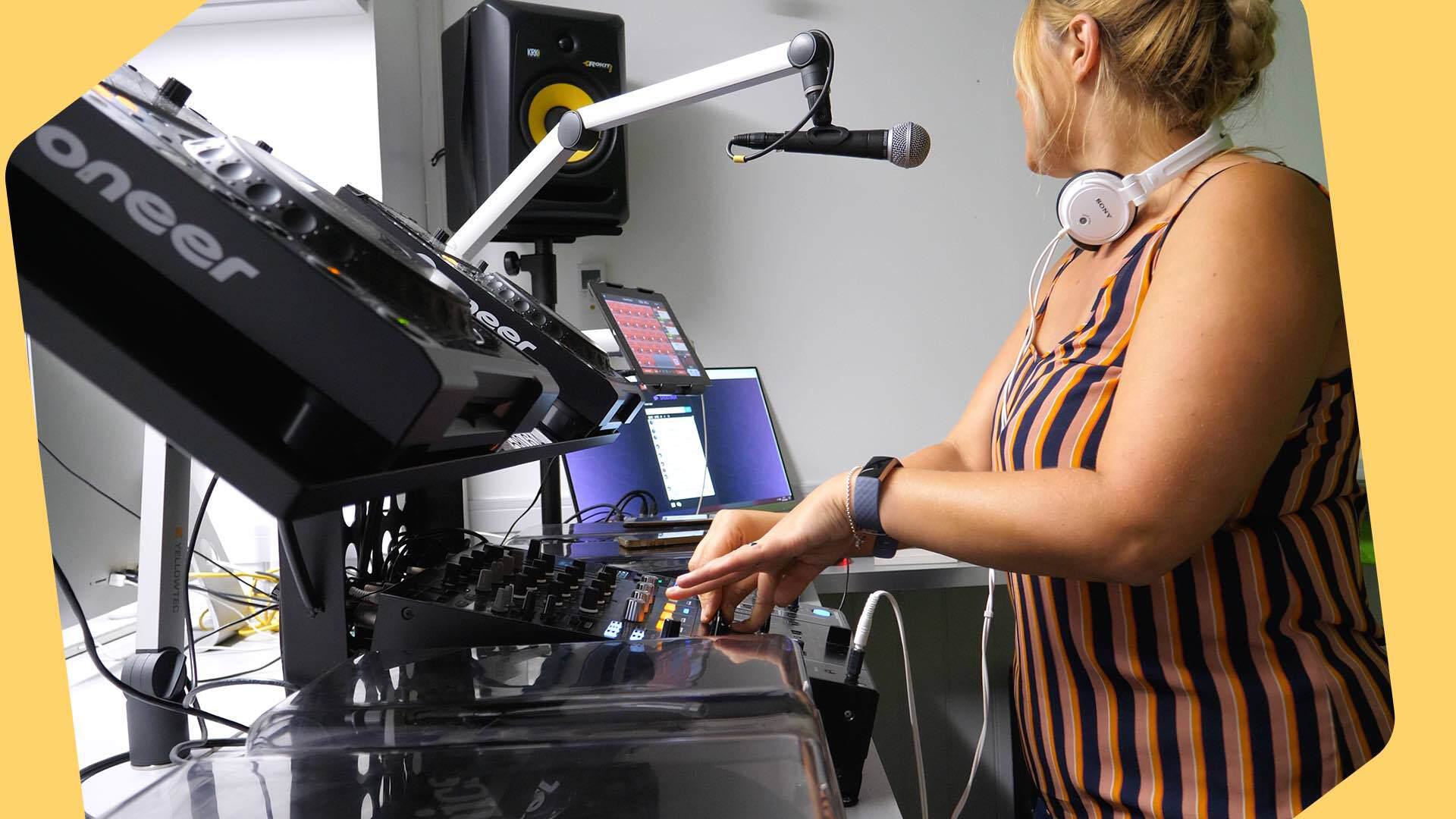
Why Start an Internet Radio Station?
As much as your favourite streaming platforms can predict your tastes and serve you up an infinite stream of content, the radio DJ continues to deliver community, news, and well-timed vibes. In a world of on-demand, radio provides a more human connection.

There's never been a better time to be a creator, a curator of taste, a messenger. Technology has helped lower the barrier for entry on almost all media, and radio is no different. Gone are the days of needing hefty studio equipment to get a signal on the airwaves. All you need now to start a radio station is a computer & an internet connection.
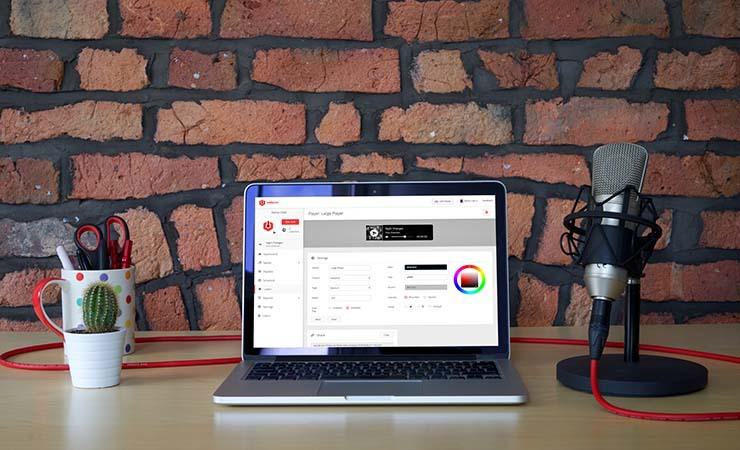
Take the first step forward. Get to know the basics of starting an internet radio station with the help of Radio.co. For over 15 years we’ve been supporting independent broadcasters, so take advantage of expert advice and start your journey today.
Your Roadmap to Success
Ever noticed in disaster movies that radio is always the last thing to go? Even though TV, X (fka Twitter) and YouTube, and Facebook are all viable ways to reach people, they always get left by the wayside in a crunch. Not only is this a testament to radio, but the way we think as well.
Although technology has changed the way we consume content, radio is still very much alive and kicking. Broadcasters both big and small have taken home their fair share of profit too. In 2023, radio stations in the US & Canada made $16 billion in ad revenue.
Whatever reason you want to start broadcasting, now has never been a better time to get into radio.
Put the Human Back into Radio
Spotify, Last.fm, and YouTube Music all have one thing in common, automation. What you hear is generated by content-driven algorithms and AI, not people. Bring back a much needed human connection with online radio, a low-barrier alternative to content curation.
Radio shines brightest when you put your listeners in the spotlight. Say hello during talk shows with live phone-ins, start conversations, build loyalty, and create a community of fans who’ll help spread the word about your show.
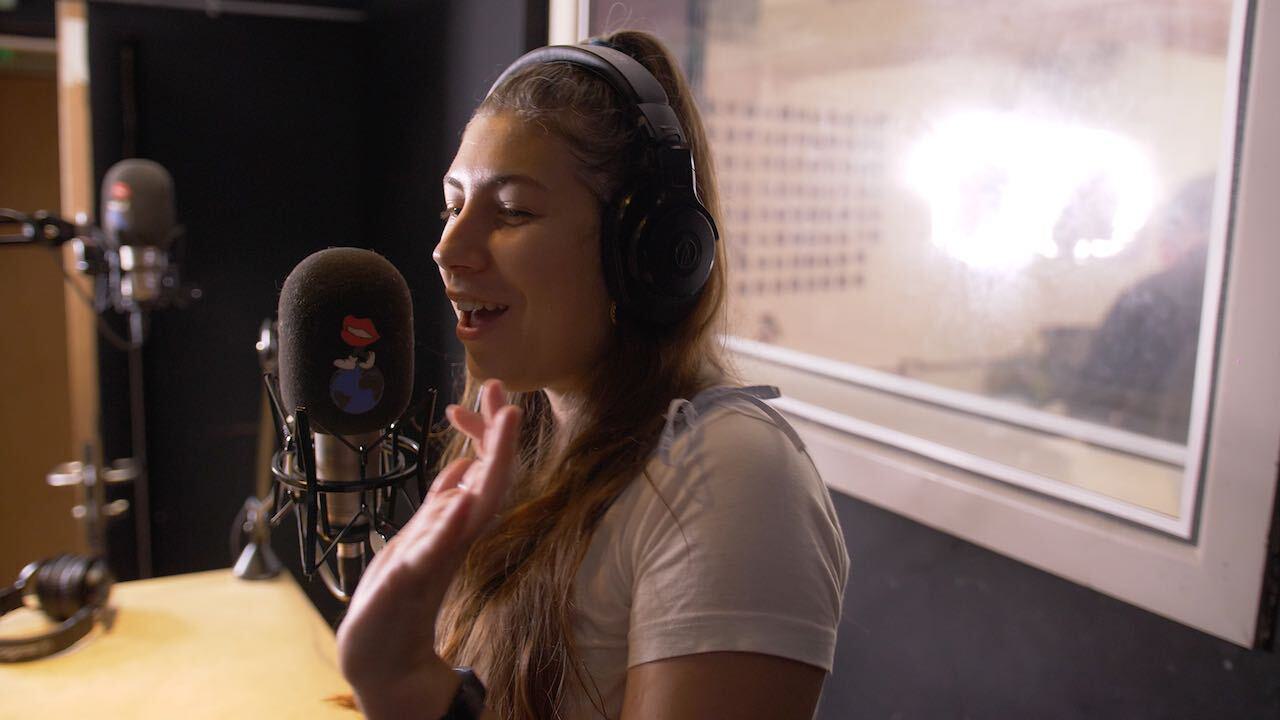
And it doesn’t stop there. Keep the interactions going on social media. Use the Radio.co app feature, push notifications, to keep listeners updated. Be that what's coming up, special events, or which DJs are at the helm. Always stay connected with your community, no matter where they are.
You can even put your listeners in control. Hand over the wheel with track requests, a simple way to give your audience a voice and make them feel a part of your show.
It's How You Broadcast
Radio has changed. Turn the clock back a couple of decades and the only broadcasters around were those with expensive clunky equipment and the technical know-how to operate it. Fast forward to today, and broadcasting is much simpler. No matter where you’re from or your experience, radio is the easiest tool to share your stories live.
FM, AM, or DAB are probably what you think of when it comes to radio, but listener habits have shifted. Internet radio is booming and has the potential to reach millions of people across the globe.
- Get peace of mind by automating shows to run in the background, 24/7.
- Collaborate with anyone, like colleagues, partners, friends, or DJs.
- Create unique content by carefully curating handpicked playlists.
- Record conversations directly in your browser, no matter where guests are located.
- Make your station easily accessible with custom iPhone and Android apps.
In other words, online radio is easy. And works for you, not against.
Your Radio Concept
There are lots of stations out there. So why should listeners tune in to yours? Without a good hook, it’s difficult to get much attention. You’ve probably got a good idea to start an internet radio station, but will anybody actually want to listen?
Haphazardly broadcasting only gets you so far. Instead, build a foundation. Who will your ideal listener be? What type of content can you create that will spark their curiosity? Ask yourself these questions and more to flesh out your station concept into a rock solid plan.

Audience - Know Who You're Talking To
Who is your audience and why should they care?
As the old saying goes “When you speak to everyone, you speak to no one”. By defining your ideal listener, their interests, and habits, it's much easier to create a show that resonates with the right people.
Every year towards December, Radio.co gets flooded with Christmas themed stations. As everyone gets into the holiday spirit, these types of broadcasters corner the market by honing in on a specific group of listeners.
Not only are they drawing in crowds, but interestingly enough the station’s message is much stronger and likely to have a greater impact. Listeners who actively seek out your station will naturally be more engaged than those that just stumble on it.
Content - Create Interesting Shows People Care About
Don’t you just hate it when you tune into a station and the presenter keeps yapping on at the beginning and ending of every song? On the flip side, if all you’re going to play is music, what’s the point? You'll have a hard time competing with Spotify playlists.
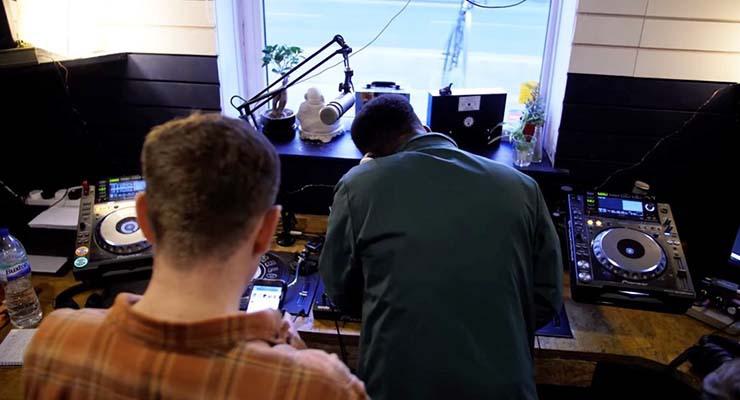
Ask yourself what type of content works best for your audience. Whether it’s music, talk, or a bit of both, put yourself in the shoes of your listeners. Churches playing pop music won’t work, but pre-recorded sermons with a mix of live choir singing would. Brick and mortar retail businesses broadcasting a motormouth presenter would most likely annoy customers. But upbeat soft music would compliment the store’s brand and atmosphere.
Presenters - Talk With Your Audience, Not at Them
Have you ever noticed how difficult conversations can be when they’re one-sided? Even people with the gift of the gab run out of steam eventually. Dead air is the worst offence any broadcaster can make. Instant red card. Keep your listeners engaged and the conversation moving forward by either tagging in a guest or talking with a co-presenter.
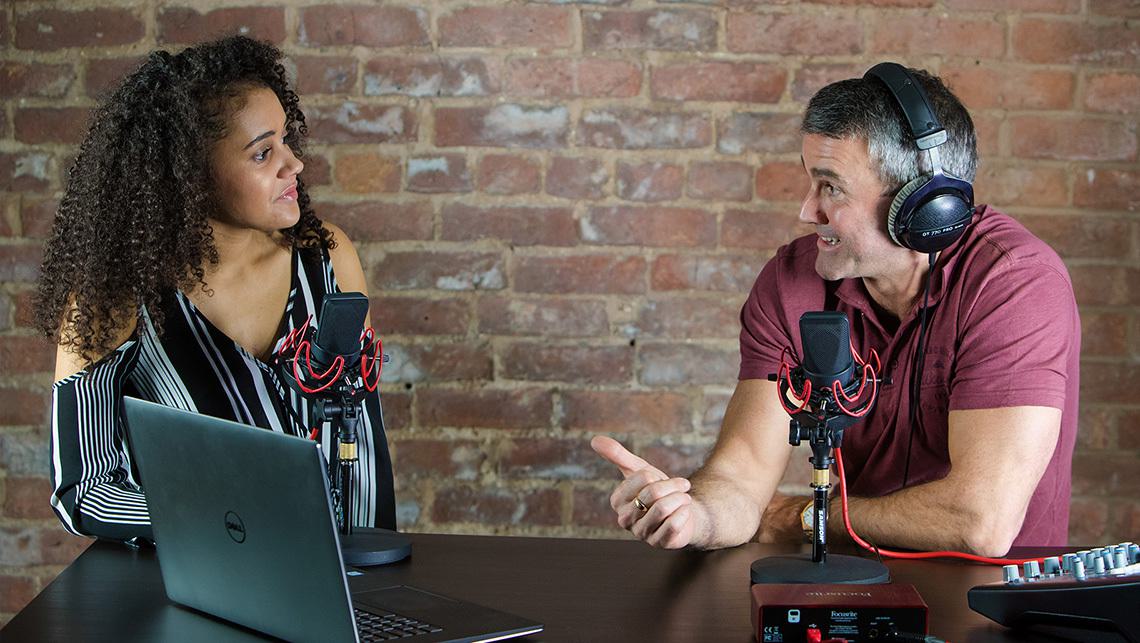
Two presenters can bounce ideas off one another and carry conversations for hours, but the same can’t be said when flying solo. Whether it’s a regular occurrence or a one-off, consider adding regular presenters or live phone interviews to your shows.
Broadcasts - Always Stay Connected with Listeners
Watching a movie in the cinema is a very different experience compared to watching one at home. Same applies to radio. Live shows let you interact and engage with your audience in real-time, something you can’t do with pre-recorded shows.
Radio.co lets you do a mix of both. Connect with your audience by sharing what’s going on right now or record shows alone (or with a presenter) and schedule them for times when you’re not around.
Big commercial stations often do a mix, pre-recording shows during the holidays when presenters are off. But you can never beat going live. As the notorious Bill O'Reilly once said, “F**k it, we’ll do it live!”.
Build a Recognisable Brand
According to leading psychologists Atkinson and Shiffrin, adults can hold new information for 15 to 30 seconds. After that... poof, it’s gone! Stay at the forefront of your listener’s mind by creating an easy to remember brand.
It's All in the Name
They say names can make or break a business, the same holds true for radio. Although it’s difficult to encapsulate what your station is about in a few words, it’s just as important as what you broadcast.
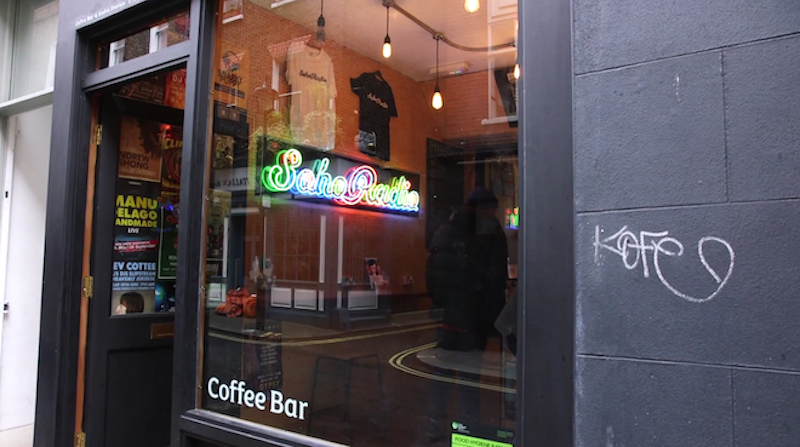
In one word, try to describe your station. Whether it’s uplifting, educational, relaxed, or something closer to home like your city’s name, use it as a jumping off point. Take Z100 New York. Right off the bat you know where it’s based. Z100 is easy to remember and could mean the station plays the top 100 hits, which it sort of does. Many stations, including London-based Soho Radio, follow this tried and true format.
Design a Memorable Logo
Turn your station’s name into a work of art, literally. People remember what things look like, not just how they sound. Translate your name or tagline into memorable artwork. But you don’t have to start from scratch. Take a backseat by hiring freelancers to design your station’s artwork - or take a stab at it yourself.
- Fiverr: Outsource to professionals. Find freelance artists to turn your vision into reality.
- Freepik: Discover thousands of free stock photos, artwork, and icons you can use to build your station’s brand.
- Squarespace: Design a beautiful logo yourself. Using a free logo maker, choose from pre-existing artwork to create something unique.

Stay with Listeners for Longer; Sound Unique
Own the sound of your station. Although that might sound weird on face value, what you play ties into what’s known as radio imaging or sonic branding. Sound effects like voice overs, music beds, sweepers, intros, outros, and jingles give your station a sound design.
Take the UK’s biggest commercial station Capital FM. Fast-paced with pop music and celebrities, their radio imaging matches the overall tone and feel of the high-energy brand. Create your unique sound that listeners can instantly recognise by hiring a full-service audio creative agency.
- TM Studios: Create a memorable audio package, all under one roof. With a proven track record of hit stations like LA News Radio (KNX 1070 AM), Easy in Miami (WFEZ), Talk News & Sports (AM 620 WJDX), TM Studios knows what it’s doing.
- Noise Fusion: Audio branding is an artform, one Noise Fusion has got down to a tee. Based in London, they’ve helped UK stations such as Radio X and even TV programmes like entertainment news shows Access.
- ReelWorld: Since 1994, ReelWorld has been making radio stations sound good. Z100 New York, 103.5 KISS FM, and BBC Radio 1xtra are just a few broadcasters to take on powerful sonic branding.
Alternatively, if you don’t want to commit to hiring audio professionals to design your station’s entire sonic branding, test out the waters first with freelancers on places like Fiverr.
Safeguard Your Station with Licensing
Your Media
Any good broadcaster has a back catalogue of tracks. From country to hip-hop, discover places you can download and build your music library.
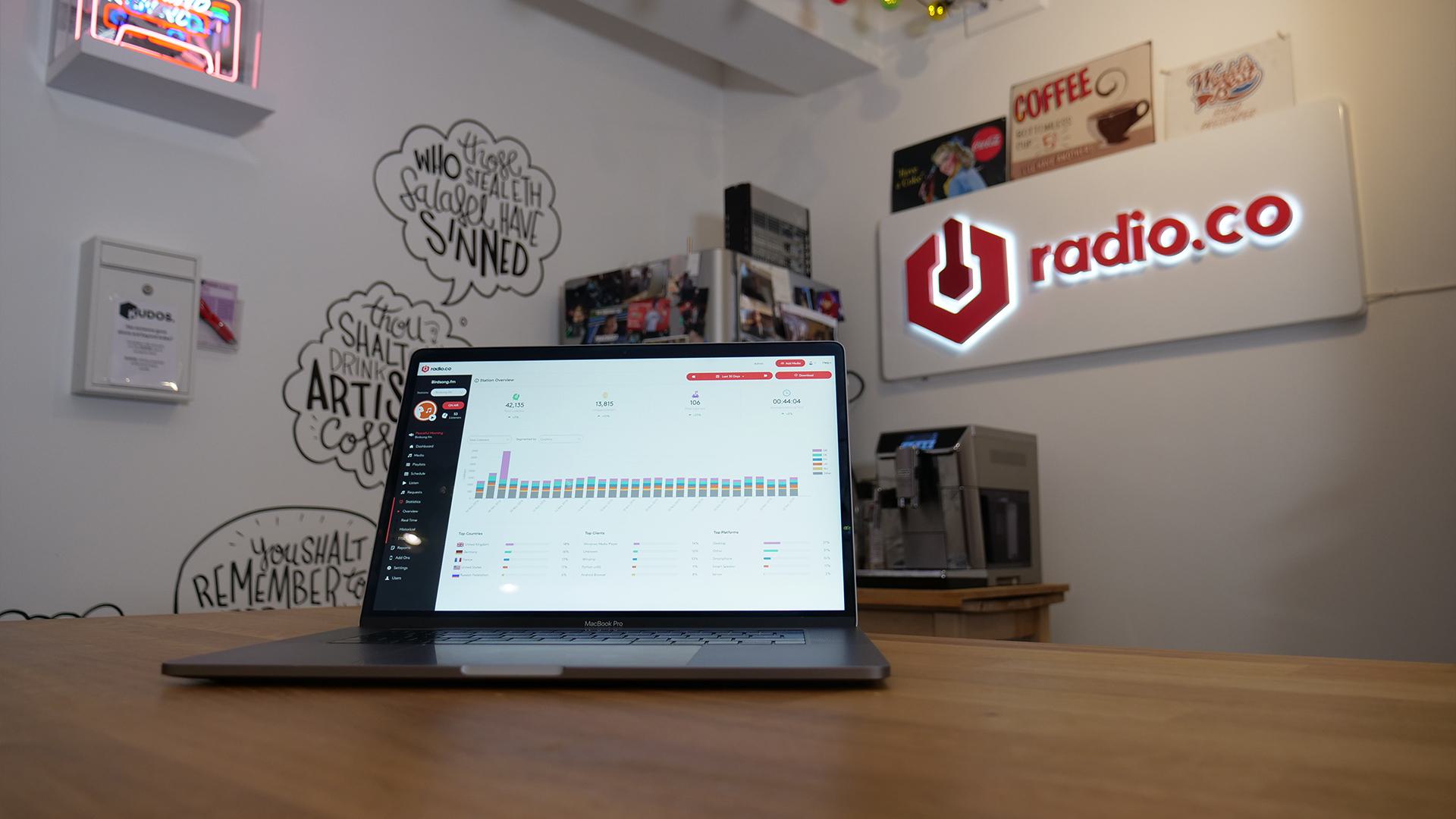
Free Music
Although it sounds too good to be true, free to use music does exactly what it says on the tin. Some artists offer their music under Creative Commons, which is a license that gives non-profit organisations permission to use the creator’s work freely.
- HookSounds: Priding itself on offering the best curated royalty-free music, their “Use & Mention” plan lets you deep-dive into an extensive collection of both well-known and fresh artists.
- Free Music Archive: Or FMA for short, is a public domain archive of Creative Commons licensed songs. From pop to jazz, download and use any tracks for free.
- Jamendo Music: Connecting musicians and music lovers together as a community. With more than 500,000 tracks shared by 40,000 artists from over 150 countries, it’s safe to assume there’s something for everyone.
- NoiseTrade: Built on generosity, there are thousands of artists and labels all in one marketplace. Discover popular artists like Sould Asylum, Cold War Kids, and loads more.
- ccMixter: Built as an open-source tool for anyone to contribute or download music. The large community now consists of over 45,000 musicians collaborating and sharing their own creations.
- SoundCloud: The world’s leading social sound platform has over 75 million music curators uploading around 12 hours of audio each minute. Although not all music is free, there’s plenty of variety to keep you searching.
- Opsound: The free online music library largely consists of instrumental music from various genres, so it’s suited for stations looking for background tracks for shows, jingles, or promotions.
Paid Music
Free to use music offers lots of enjoyable artists, but probably not the ones you or anyone else knows. Find familiar songs through paid music. From Elton John to Bob Dylan, download tunes you know and love.
- I Like Music: Designed for and built by broadcasting professionals, I Like Music supplies thousands of tracks that range from all time cult classics to new tracks you can’t obtain digitally anywhere else.
- Beatport: Home to a large collection of electronic music, Beatport is ideal for DJs looking for full sets and mixes from independent artists. With over 1 million tracks and over 120,000 artists, discover exclusive music you won’t find anywhere else.
- Google Play Music: Just like Apple Music and many other big players, Google have thrown their hat into the music ring. Providing a service aimed at music lovers that want all the latest songs, but on a budget. Just like Spotify, there are endless songs with well over 35 million available.
- Amazon Music: Every song under the sun is available in both digital and physical formats on the popular online retail goliath. Amazon is still the go to place to buy an album. With millions of artists available, you’re really spoilt for choice
Amass a collection of music you love and store everything in the cloud with Radio.co. Just add your favourite songs using the most common file types, MP3 or AAC, by uploading and organising everything in your dashboard, then get ready to start broadcasting to the world.
Basic Equipment
Most broadcasting setups can get by with just the essentials, so using their laptop's in-built microphone or a USB mic. These are fine for testing the water and seeing if broadcasting is for you. Once you're happy to level up, we recommend investing in certain equipment for top-notch audio quality. Here's a list of suggested starter gear for a more professional sounding broadcast.
Microphone
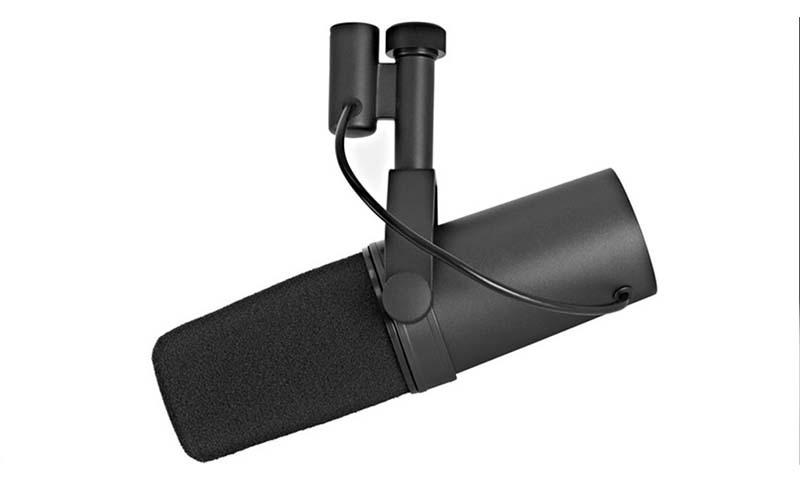
The Shure SM7B is a popular choice for broadcasters, but for good reason. With a built-in shock mount, internal pop filter, and simple design, the SM7B has everything you could possibly need in a dynamic mic.
Affiliate Links
Audio Interface
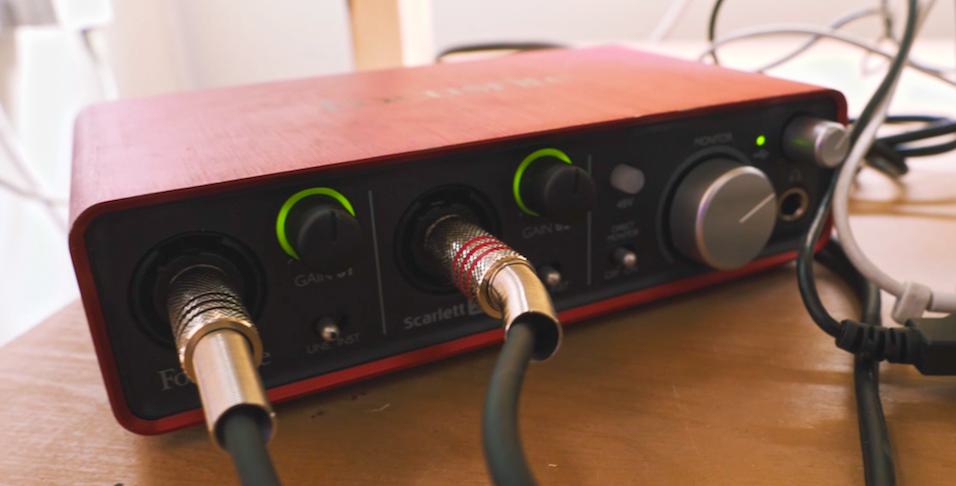
Microphones are power-hungry beasts that need enough voltage to work properly. Use a good interface like the Focusrite Scarlett Solo, ideal for the ‘one-man-band’ radio broadcaster.
Affiliate Links
Boom Arm
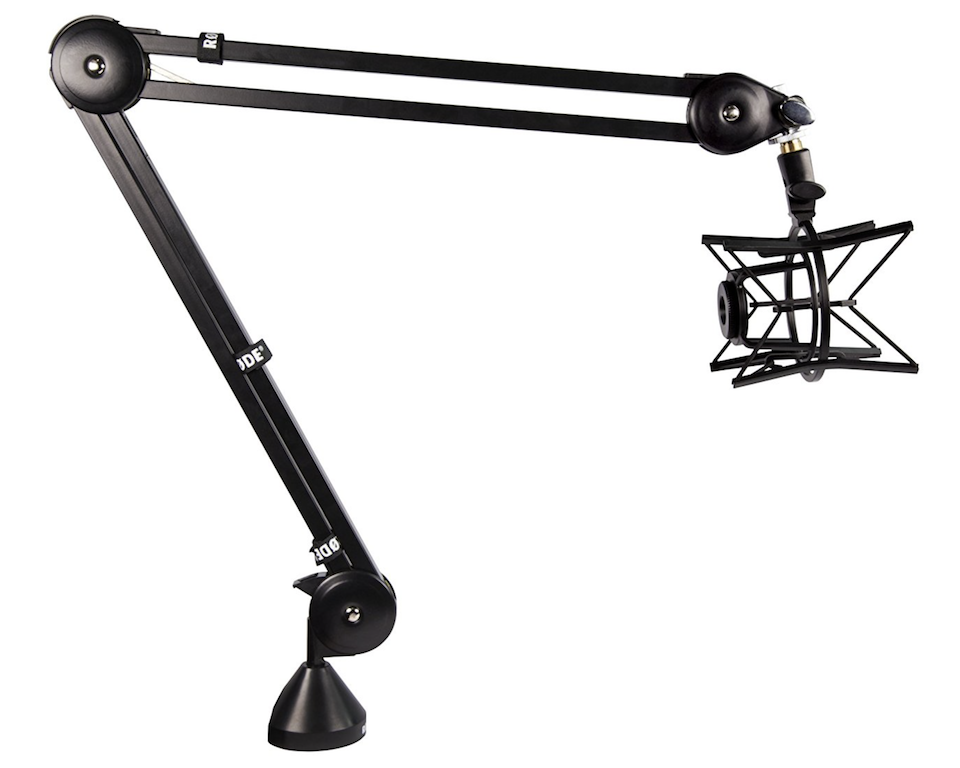
Nobody wants to be hunched over a desk talking into a microphone. Get up close and personal for clearer audio using a boom arm. Whether you’re standing, sitting, or moving about, mic arms like the Rode PSA1 give you the freedom to broadcast the way you want.
Affiliate Links
Pop Filter
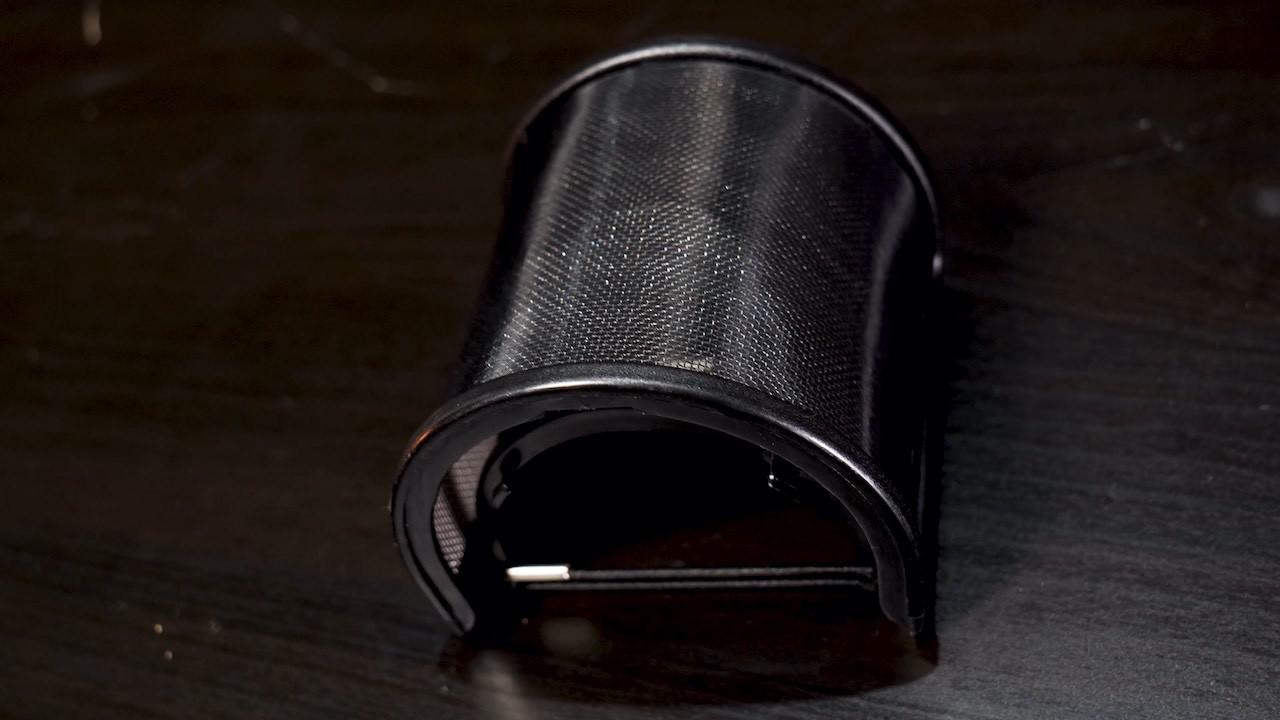
Most built-in pop filters aren’t great (even the SM7B). Reduce harsh-sounding peaks and save your audio with an external one. The InnoGear pop filter clips onto your boom arm and acts as a barrier, ensuring you always sound your best.
Affiliate Links
Headphones
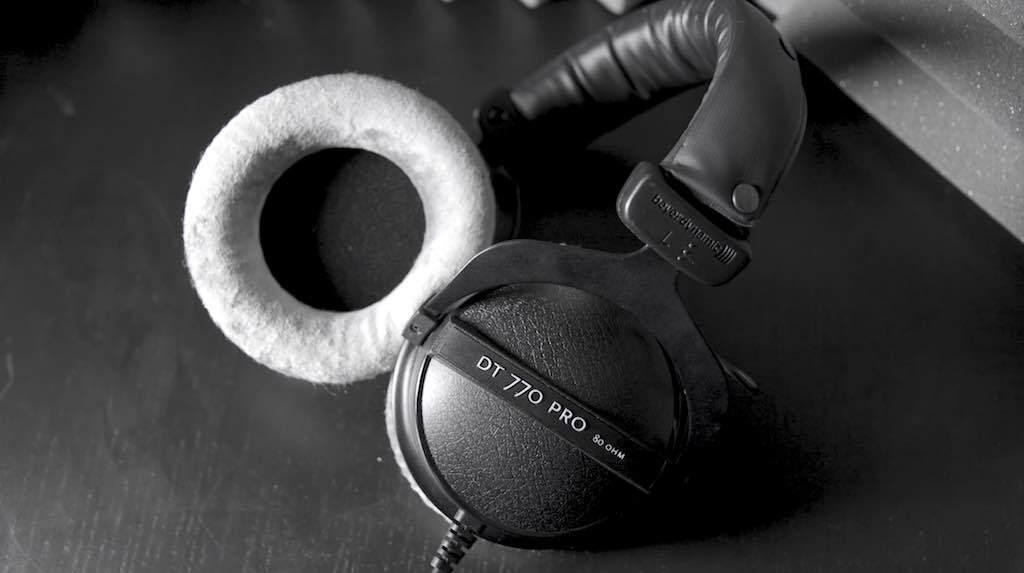
Where would Sherlock Holmes be without trusty Dr Watson? Find the yin to your yang with a good pair of headphones like the Beyerdynamic DT 770 PRO. Comfortable and stylish, go for hours listening to these studio-quality headphones designed for professionals.
Affiliate Links
Advanced Equipment
For an insight into what a more advanced professional radio studio setup looks like, check out the video below.
We like to nerd out over this stuff. Did you know we review audio equipment over on our YouTube channel?
Your Schedule Outline
Radio is typically always on, listeners tune in at all hours of the day ready to pick up what you're throwing down. It’s important to understand different communities and audiences have different habits and tastes and that serving the right content and the right time is key for engaging audiences.
Tailoring your playlists and conversations to the time of day will go a long way to ensuring your station is a success, consider these key times in your schedule:
- Breakfast - A peak switch-on time, you have an opportunity to energize listeners as they prepare for their day. Light-hearted content helps to get the day off to a good start. Top-of-the-hour news helps keep listeners informed of the important stories relevant to them. People are busy preparing for their day so keep things light.
- Lunchtime - Much like breakfast, listeners don’t want to be over-challenged or provoked while preparing their lunch so keep topics light, play popular music and maintain a friendly attitude.
- Drivetime - Listeners generally tune in for their commute home and are typically listening more closely to your station so it’s a great opportunity for more thoughtful features and intelligent discussion.
- Evening & night-time - Mainstream stations typically use this time for more specialist broadcasting. Whether that's a specific music genre show or subject debates. So this is ideal time to deep dive into your communities niches. A broader range of shows will help broaden your reach to your community.
Keeping Listeners Informed with Day News
We all want to know what’s going on in the world today. Keep your listeners regularly updated with breaking news. Journalists can report live directly to their Radio.co station. Or record news segments to repeat on air with our voice tracker. Voice tracker is a nifty tool that lets you record your audio right in your browser).
Not a journalist? Broadcast a hosted news feed on the hour to all your listeners automatically with Radio.co’s top of hour news bulletin. You don't need to manually schedule events or replace files in your library. This can all be automated so the news is delivered like clockwork. You can even use an AI news generator who can turn text-to-speech or clone your own voice. Make the news your station's own with a custom message at the start and end. And add background music throughout for that professional sound.
Your Streaming Partner
Wave bye-bye to overly complicated transmitters and say hello to a simple out of the box solution.
Radio.co handles everything in the cloud. Just connect a microphone to your laptop and start broadcasting to your radio station online.
When it comes to broadcasting, it’s just you, us, and your listeners:
- Source (You): Your computer mixes audio, like your microphone or music, then converts the sound into a constant stream of data packets which are sent to your radio station.
- Server (Radio.co): When your stream arrives at the server it gets cleaned up, organised, and sent to the right channels, such as mobile apps, players, and directories.
- Listener (Everyone): Whether at home, in the car, or out for a walk, your listeners can stay connected to your radio station 24/7.
But it's not always been like this. Back in the day, if you wanted to start an internet radio station it would take blood, sweat, and tears. And that's assuming you knew what you were doing.
Today, that's changed. Radio.co makes broadcasting online easy. Just like Netflix or Hulu, login via your browser to manage your account. Upload tracks, schedule live events, and broadcast globally in minutes.

Support - Get Help When You Need it
Never get lost with the help of Radio.co’s friendly sales and support team. Right from the start, get your questions answered instantly over messenger, or chat with us on the phone in a one-to-one demo. No matter what’s on your mind, we’re always here to help.
Content - In-Depth, But Simple Guides
If you prefer to get stuck in, there are a ton of useful in-depth guides ready to point you in the right direction. From uploading your first file to reaching thousands of listeners, Radio.co has you covered.
Dashboard - Your All-In-One Command Centre
From the moment you login to your station for the first time, you’ll soon realise how easy everything is. At a glance see what’s coming up and discover how well your station is performing. Drill down into your dashboard with plenty of substance. From customisable web players, branded mobile apps, and in-depth reports, there’s enough here for even the most experienced of broadcasters.
Platform - Reliable Hosting Provider
Invest in a partner you can trust. Radio.co’s reliable track record gives you peace of mind. With 99.9% server uptime, regular status reports, and a technical team keeping things ticking over behind the scenes 24/7, you know you’ll always be in safe hands.
Getting Your Station on Air
Take your idea and run with it. In just a couple of minutes transform your concept into a fully functioning radio station you can be proud of with the help of Radio.co.
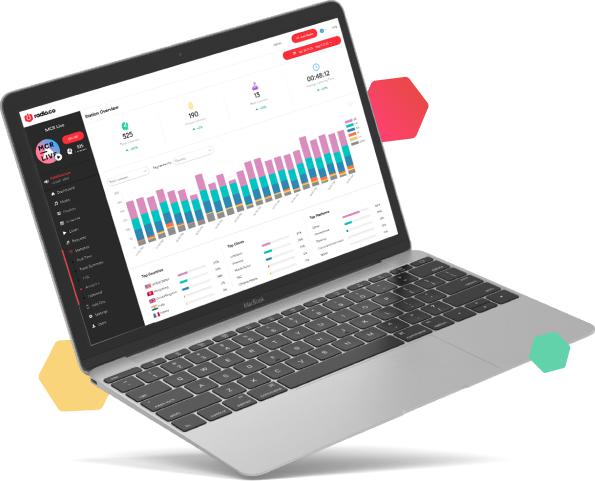
Say Hello to Your New Home
There’s no ‘new car smell’ with online radio, but that doesn’t make it any less special. Right from the start carve out your station’s own identity with a much needed makeover. Set your name, description, genre, and upload a logo to make the radio dashboard your own.
Broadcasting Tools for Professionals
Audio quality has dramatically improved in modern times. You’d be surprised to know AM radio broadcast quality is only 48kbps. FM isn’t much better at 64kbps, and DAB is just a bit better at 96kbps. Whether you want to pay homage to days gone or are looking ahead to the future, set your sound quality all the way up to a crystal clear 320kbps.
Stay informed with your station’s performance with weekly digest emails, a summary of your listener statistics direct to your inbox.
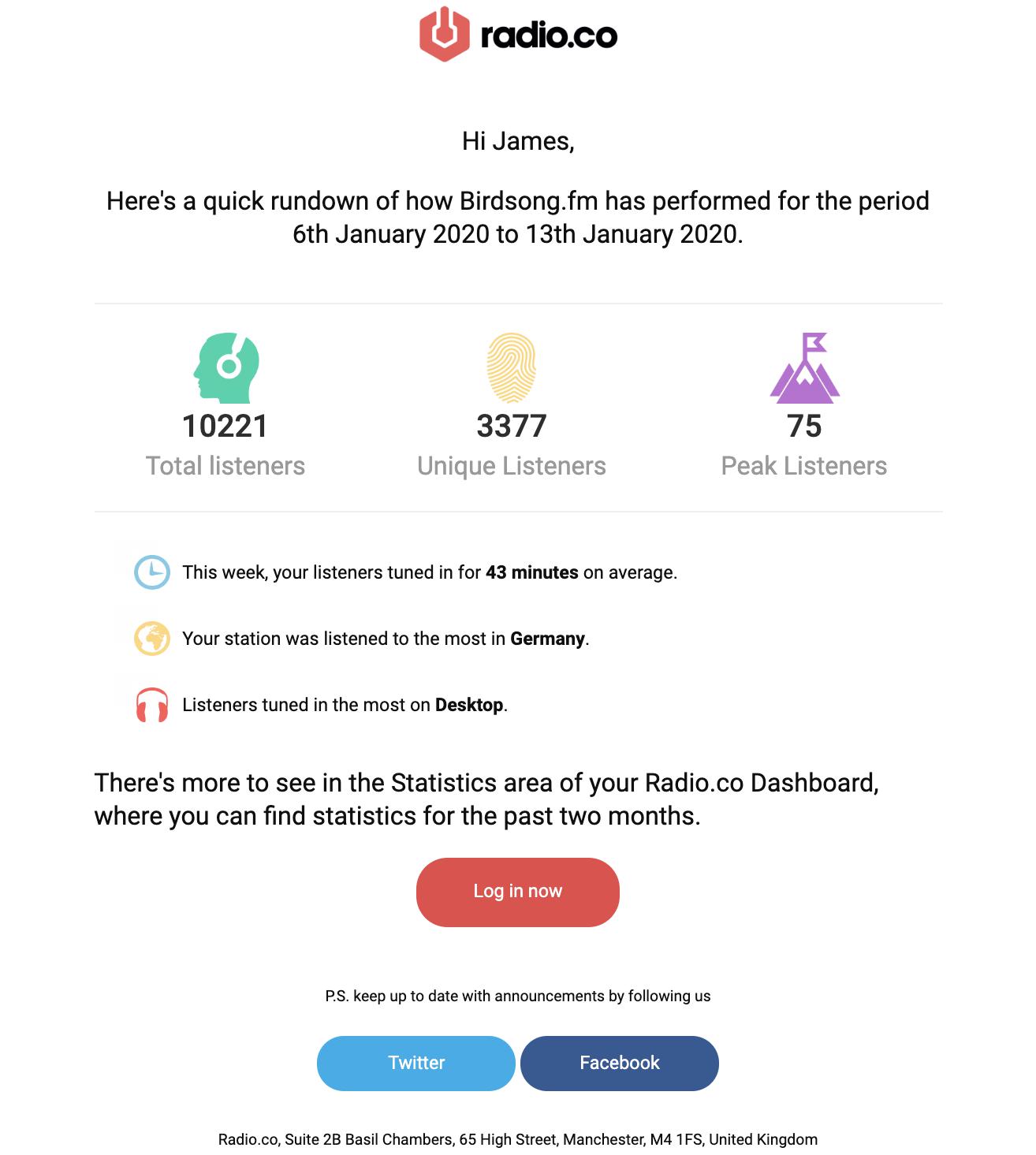
And never repeat yourself with album and artist separation rules. Set a limit on the number of times a track from an album or artist is played within a given time frame.
But it's not just about you. Open your station to listeners with track requests. Using the requests widget, set some ground rules on which tracks you want listeners to see, how many times they can pick a song, and when unplayed tracks expire.
Protect yourself with an extra layer of security. Say who can and can’t stream your station with geo protection, the best way to stop unwanted ears listening or for licensing purposes. Alternatively, target specific listeners by adding them to your ban list. Stop people from copying with ripper protection. Software like Pathfinder and RipCast not only save your stream, but waste your bandwidth, preventing genuine listeners from connecting when your server is full.

Go On Demand
Integrate your station with popular tools to get yourself noticed and capitalise on listener habits. Use our sister brand, Podcast.co, to turn your talk shows into podcasts, and use Mixcloud for your music shows.
Radio.co Crash Course
Start an internet radio station the right way. With Radio.co, easily upload your favourite music, organise into playlists, and schedule to play at a time that suits you. The best part? Everything is in the cloud, so you don't need your computer running 24/7. Set everything up, then check in every once in a while.
Uploading Media
Organising files into folders, renaming, converting samples rates, and just generally managing media is never fun. Tidy your entire back catalogue automatically by uploading your tracks to the cloud.
Drag and drop files in your browser to quickly add tracks to your station. Categorise all your tracks with tags so you know what’s what. Whether by year, genre, format, or something else entirely, set your own custom tag names for randomising selection within playlists.
Crafting Playlists
Demonstrate your broadcasting skills by weaving together playlists listeners will love. For the purists out there, just add tracks from your media library one by one for concrete sets. Or go deeper to keep things fresh by using tags to randomly select files. Whatever you choose, keep playlists diverse and engaging with a combination of music, talk, jingles, and news to build professional shows.
Scheduling Shows
Schedule what you want to broadcast, and when. Choose the day, time, duration, and whether you want events to repeat. They say all good things come in threes. Select an event type, either connect a live DJ, relay another stream, or air the selected playlist. Show what’s playing on your players, apps, and radio directories with track information, or show the playlist. If your shows are just a bit too long then cut them off on time with overrun. The current track ends, so the next scheduled event can start.
Stop, Collaborate and Listen
Not everybody has the option of being in the same room when presenting shows together. You and your presenters can record from anywhere and in different locations using Radio.co. Whether that's because you have a co-host out of town, a last minute change, or even a guest in another country.
- Radio made simple. Presenters get an email with a link to join
- No software needed, just record directly in the browser
- Shows are automatically stored after each recording
- Broadcast shows multiple times so nobody misses out
Go one step further and hand the reins over to your team. Invite peers, friends, or family to manage your station when you’re not around.
Everything you can do, your team can too. From uploading tracks to broadcasting live, give permissions to the right people. Don’t want your guest DJ uploading music or viewing reports? Limit what they can do with user roles. Appoint your station manager to control everything, set a music controller to manage your schedule, and just let DJs broadcast live.
Broadcast Live Anywhere, Anytime
Everywhere is your radio station. With a laptop and microphone in hand, turn your dining room, back office, and practically anywhere else into a studio. Go live in seconds at the click of a button using Radio's partner BUTT (Broadcast Using This Tool). Live takeovers covering breaking news are a breeze, or broadcast entire talk shows from the comfort of your home.
Break free from stuffy old rooms by taking shows out on the open road. No matter where you are, broadcast from your iPhone using iziCast. Be just like a real-life news reporter and go live in 3… 2... 1!
We’re all only human and make mistakes from time to time. In the industry, dead air is the equivalent of a red card. But online radio gives you peace of mind by running your shows in the background 24/7. If disaster strikes during a live show, be it hardware malfunction, loss in internet connection, or you just have to leave early, Radio.co automatically takes over with your custom curated playlists. No matter what happens, your listeners never miss out.
Amplifying Your Voice
We all want to be heard, but with so much noise online it can be difficult to get cut-through - especially if you’re just broadcasting in your own little corner of the world.
Go beyond your comfort zone by reaching listeners where they are. Create a presence on social media, design your own custom iPhone and Android apps, reach out to like-minded influencers, or even get featured on the local news.
More choice means more open doorways to your radio station. And as they say, variety is the spice of life. Empower your audience by giving them the tools needed to always stay connected.
Share and Get Discovered by Listeners
Building a radio station is one thing, attracting listeners is another. Luckily Radio.co gives you the tools to draw in a crowd, all from the comfort of your home.
Always Stay Connected with Website Players
Automatically play your station for your website visitors with stylish custom players. Lovingly craft yours with the player builder, the easiest way to create and distribute access to your station.
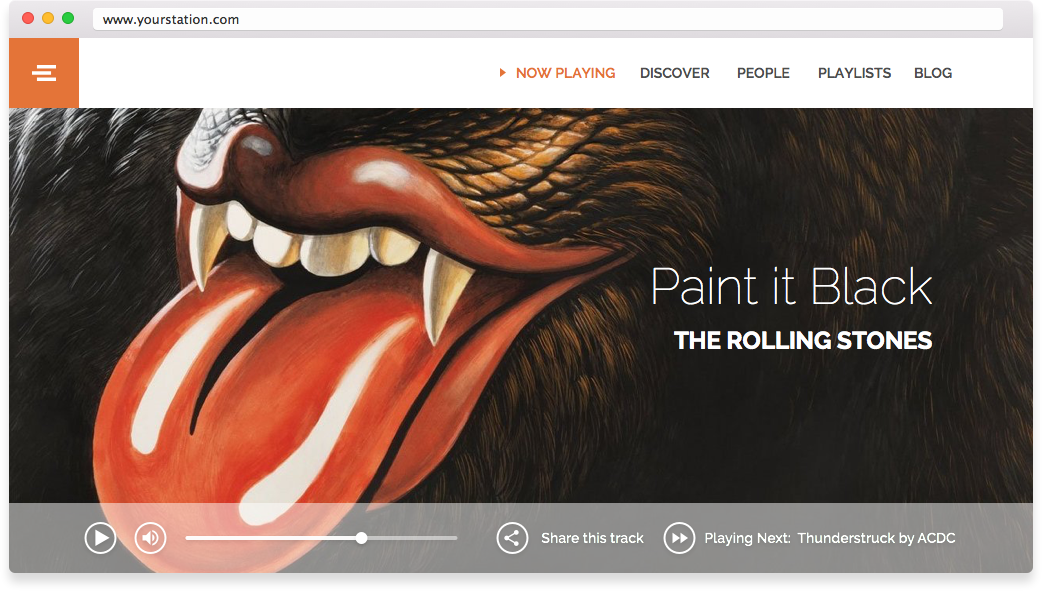
Just like a Swiss army knife, the player gives you an arsenal of handy tools. Add social sharing buttons so listeners can talk about your station on X, TikTok or Facebook. Enable track info to show off your stations selections. And pop out your player so visitors can stay tuned, even when they leave your website. The best part? Copy, paste, and publish to your website, all without writing a single line of code.
Get Discovered on Popular Radio Directories
One of the biggest challenges radio stations face today is getting found. Grow your community by being where your listeners are. Increase your chances of getting discovered by getting featured in online radio directories.
With dozens of popular destinations like Streema, Mixcloud, and Dirble, the team here at Radio.co can help you find and get listed on these places and more in no time.
Go Mobile with Branded iPhone & Android Apps
Create a home for your radio station on your listener’s phones. With over 3.5 billion people carrying smartphones in their pocket, now is the perfect time to go mobile. Design and build sleek custom iPhone and Android apps, all without any coding experience.

Submit your app’s design and we’ll do the rest. From building your own custom apps for iPhone, iPad, and all Android devices, we do the hard work for you. In the end your branded apps will be available across The App Store and Google Play for everyone to download and enjoy.
Alexa, Play My Favourite Radio Station
According to Amazon, there are now more than 100 million Alexa devices. People are talking to smart speakers to order online, stay connected with friends, and listen to music. As homes get smarter, so should your radio station.
Create your own unique skill so listeners can tune into your station, all without lifting a finger.
Become a Household Name
Just exactly who are you anyway? Warm up listeners the right way by creating a killer brand nobody can resist. From identity to tone of voice, make your radio station stick in people’s minds.
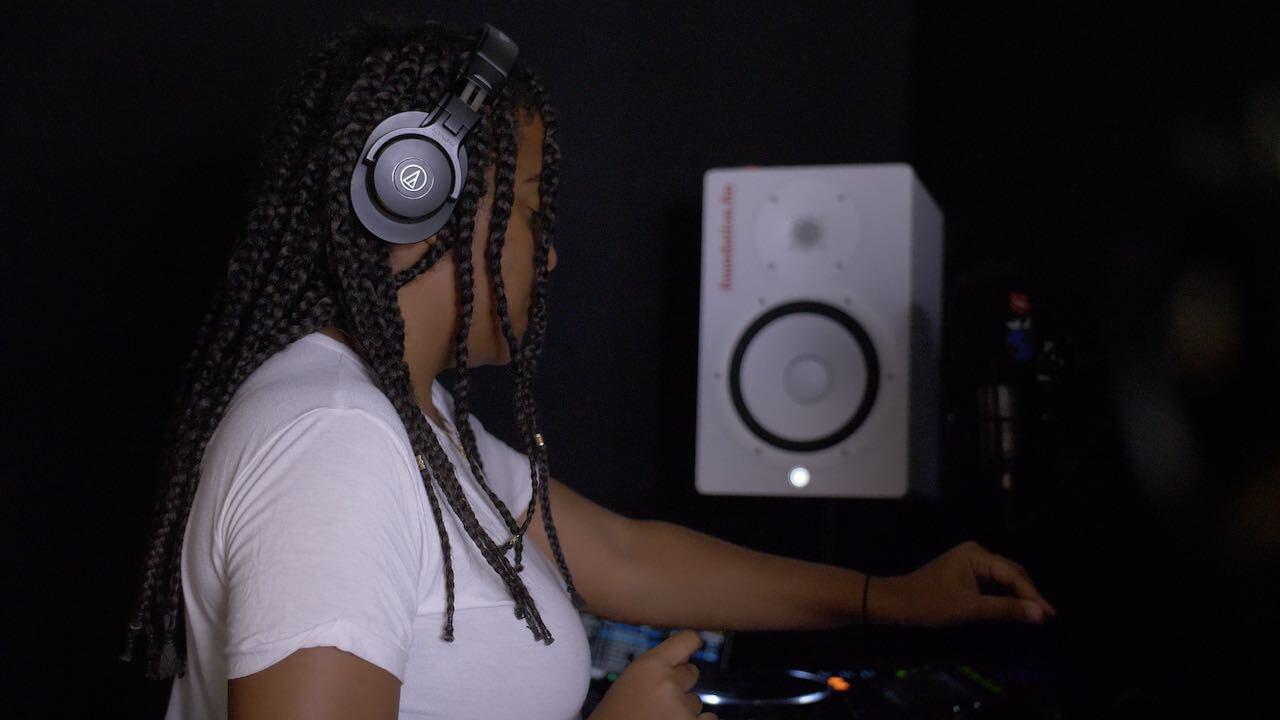
Get inspired by others to see how you can craft the perfect mission statement, choose the right colours, sound your best with sonic branding, and design the perfect logo to become a household name.
Turn Your Passion into a Side Business
Monetise your shows by turning listeners into customers. But let’s face it, there’s no get rich quick scheme when it comes to making a profit from radio. It takes hard work, dedication, and a good plan to follow. Whatever route you take, rest assured there are more ways than one to turn your passion into a full-time business.
- Advertisements: Tried and tested, ads are short promos from businesses wanting to talk to your listeners. Whether local or global, give companies looking to get noticed a platform, whilst making a profitable return.
- Sponsorships: Throw your hat into the ring and endorse products or services you care about. Strike a deal with companies for host read ads, usually mentioned throughout your show.
- Subscriptions: Build a following with your free-to-access radio shows, then ring-fence additional content for subscribers only. Use sites like Patreon to create rewards based on subscription level.
- Affiliate programmes: Earn off the back of businesses. Companies like online retail stores pay based on number of clicks or percentage of sales made through you.
- Donations: Ask your community to show their support. Using platforms like GoFundMe to raise capital to cover streaming costs, buy new equipment, or other ways to invest back into your radio station.
- Merchandise: Get your brand noticed, start a side-business. Places like Merchify and Bands on a Budget let you design and create custom merchandise like t-shirts, hats, hoodies, mugs, and much more.
Success Stories
People from all walks of life are using online radio to broadcast their message. Businesses are adding more value to their existing services, schools are creating safe learning experiences for students, and passionate broadcasters are turning their hobby into a full-time business.
Whatever your goal, get inspired by leading innovators already making the most of online radio.
Melodic Distraction - Community Focused
"Online radio has allowed us to go from 7 shows a month to 65. We make more killer shows, listeners get extra content."
Anderton Tiger - Educational
"The beauty of radio is no one cares what you look like. It’s all about performance and collaboration, which is vital in building healthy characteristics in young students."
Soho Radio - Brand Awareness
"People have come all over the world to visit because they’ve heard us online."
Music For Pets - Premium Services
"Radio adds more value to our services because it’s an easy way for customers to consume content."
St James & Emmanuel - Religious
"Our daily online radio service brings loads of traffic onto our website and starts lots of interesting conversations."
Looking for Help?
There's never any shame in asking for a hand. As you've got to this point, chances are you're committed and looking to start an internet radio station of your own (or you just skim read incredibly fast).
Whatever the case, we've got your back. Either let us know what's on your mind in the comments below, or drop our team a message.



